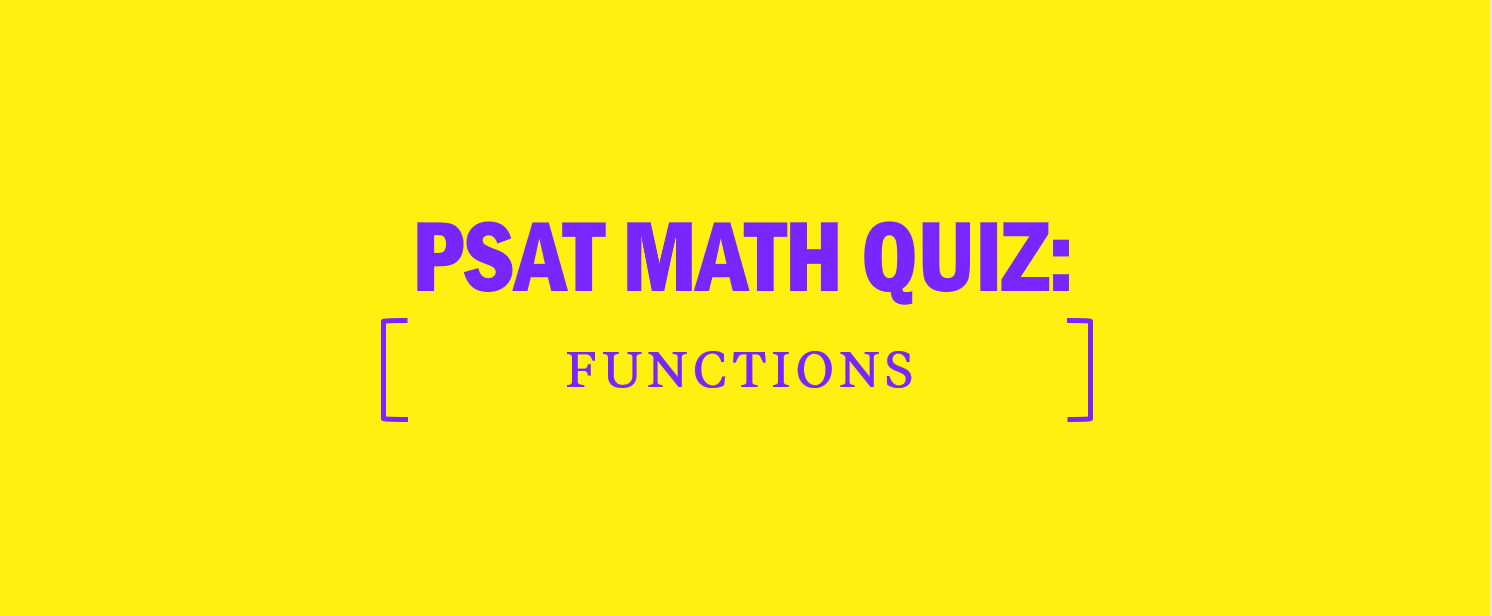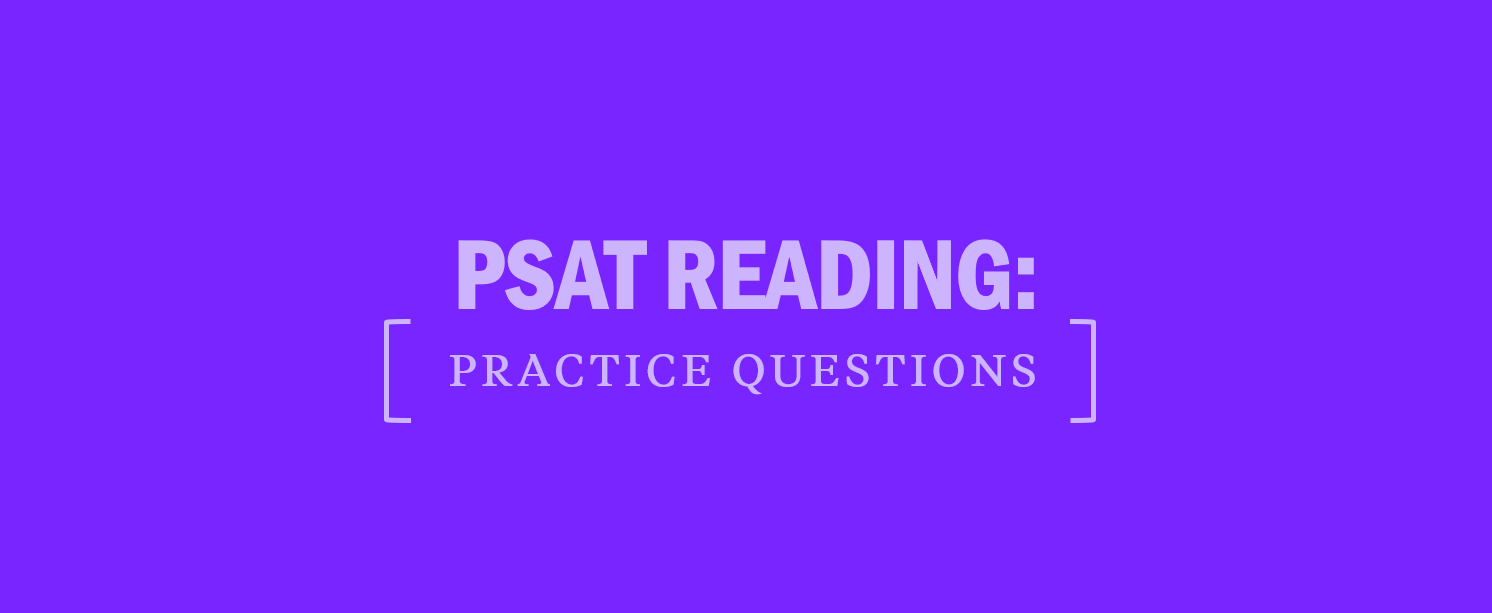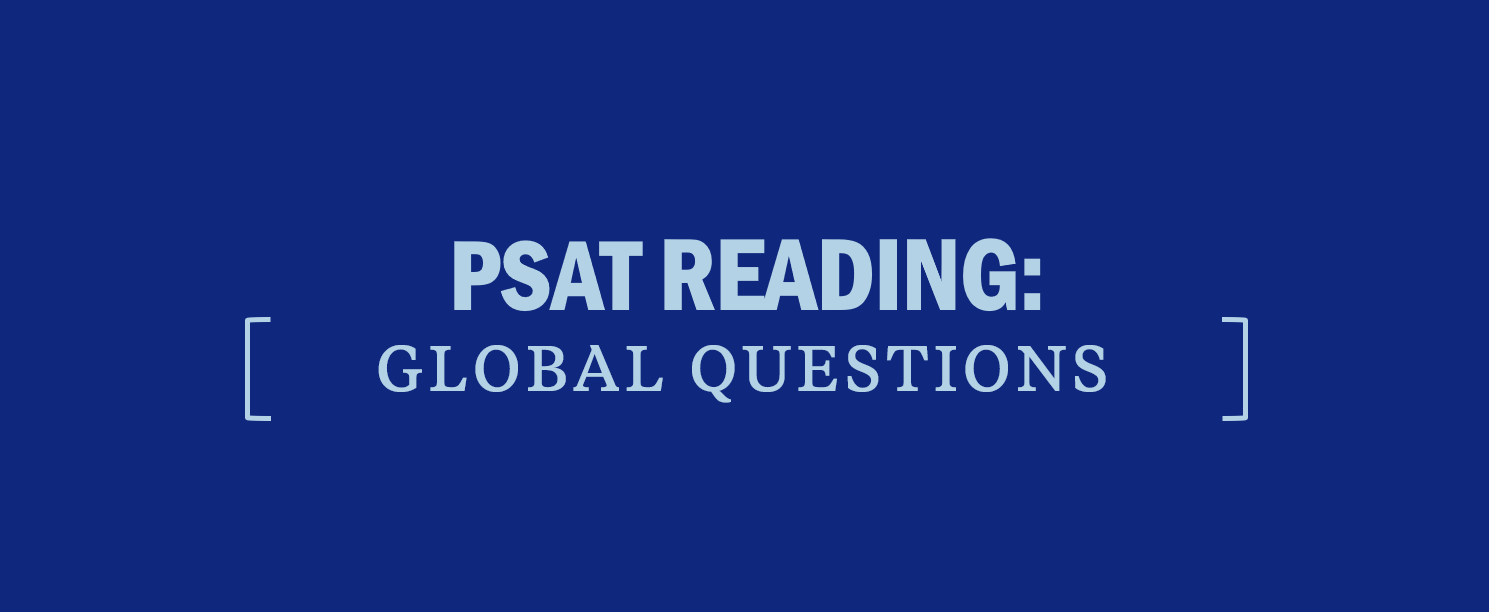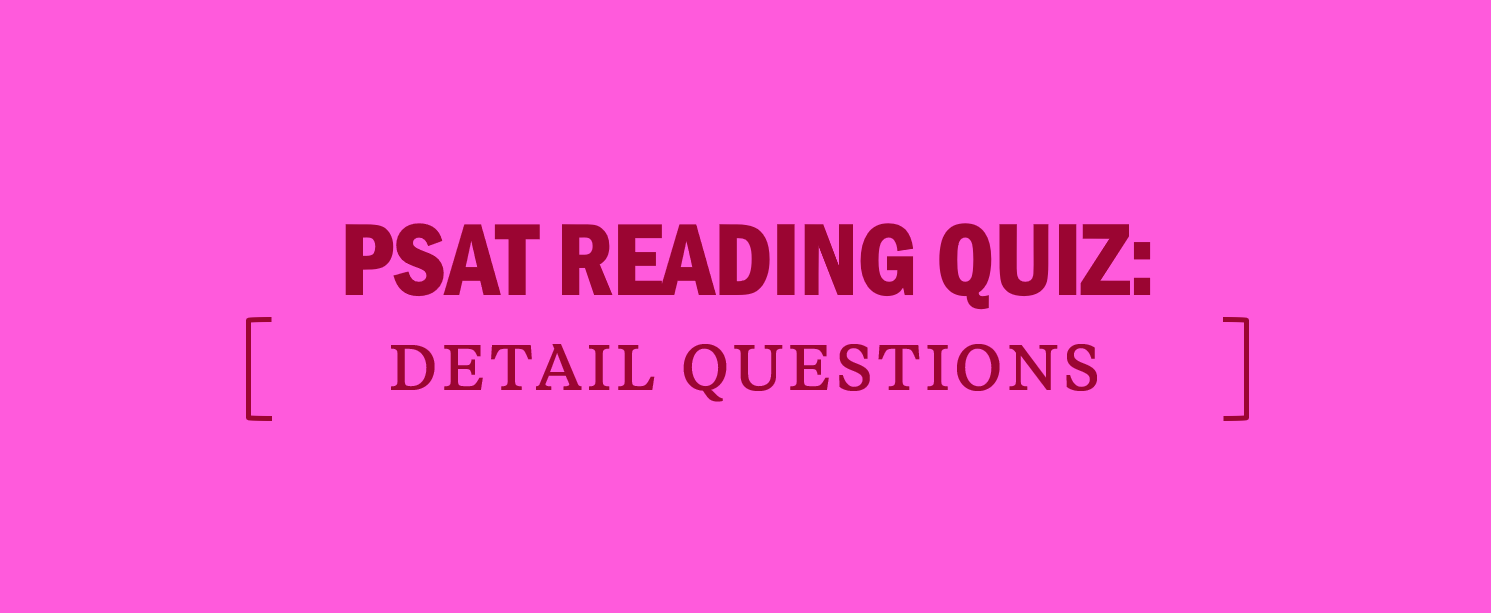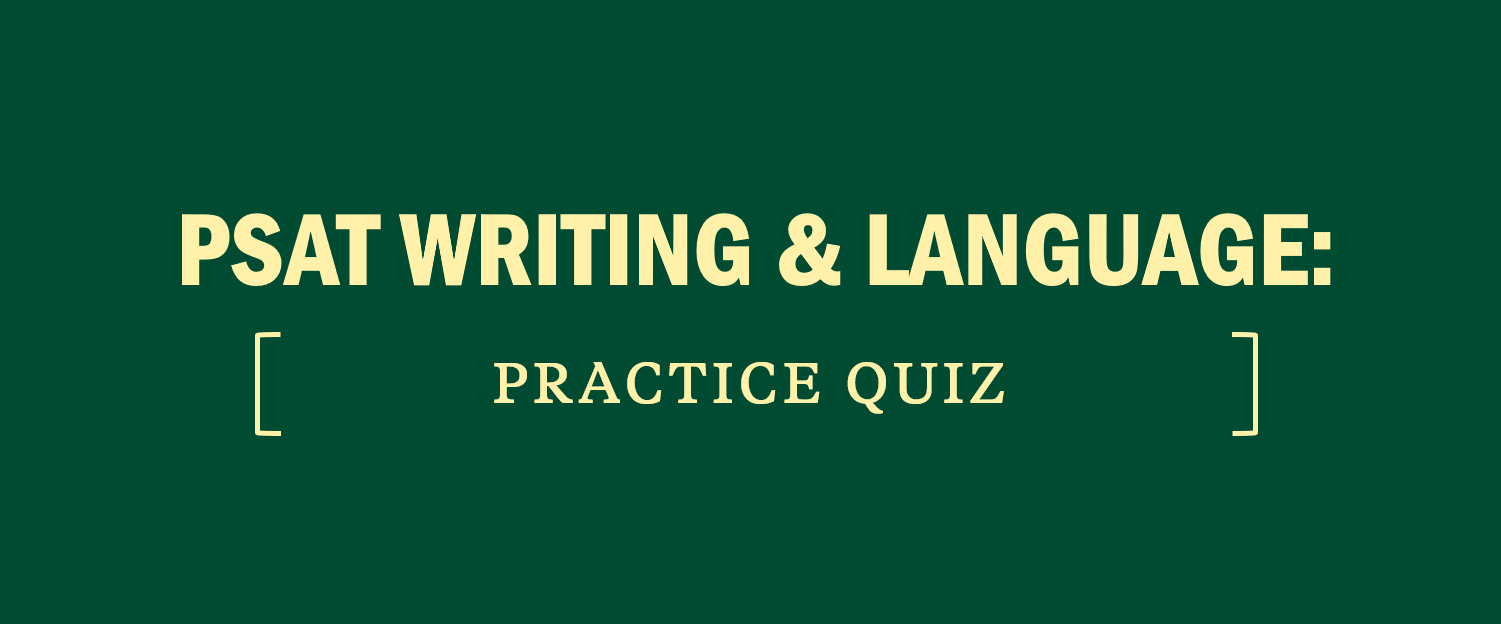PSAT Test-Taking Strategies: Top 3 Tips
Enhance your test prep by reviewing our top PSAT test-taking tips and strategies. As you study for the exam, you should familiarize yourself with what’s tested on the PSAT as well as the structure of the two main sections it entails: Reading & Writing and Math. The PSAT tips and strategies outlined in this article can be applied to either of these sections to help raise your PSAT score.
[ READ NEXT: What’s a Good PSAT Score? ]
PSAT Strategies: How to Approach the Test
The PSAT is different from the exams you are used to taking in school. For example, on a test given in school, you probably go through the questions in order. You spend more time on the harder questions than on the easier ones because harder questions are usually worth more points. You probably often show your work because your teacher tells you that how you approach a question is as important as getting the correct answer.
This approach is not optimal for the PSAT. On the PSAT, you benefit from moving around within a module if you come across tough questions, because your goal is to answer as many questions correctly as you can in the time provided. It doesn’t matter how you arrive at the correct answer—only that you select the correct answer choice.
Keep reading to review three expert PSAT tips to help you increase your PSAT score – and test with confidence. The strategies discussed below can be used in both the Reading and Writing section and the Math section of the PSAT.
PSAT Strategy #1: Triage the test.
You do not need to complete questions on the PSAT in order. Every student has different strengths and should attack the test with those strengths in mind. Your main objective on the PSAT should be to score as many points as you can. While approaching questions out of order may seem counter-intuitive, it is a surefire way to achieve your best score.
Just remember, you can skip around within each module, but you cannot work on a module other than the one you’ve been instructed to work on.
To triage the PSAT effectively, do the following:
- First, work through all the easy questions that you can do quickly. Skip questions that are difficult or time-consuming. Use the digital test’s tool to flag any questions you are initially skipping. Before you leave the question, you might want to mark a guess, just in case you don’t have time to return to it.
- Second, use the module review screen to return to any questions you skipped. Work through the questions that are doable but time-consuming.
- Third, work through the hard questions.
PSAT Strategy #2: Use elimination.
Even though there is no wrong-answer penalty on the exam, elimination is still a crucial PSAT strategy. If you can determine that one or more answer choices are definitely incorrect, you can increase your chances of getting the correct answer by paring the selection down.
To eliminate PSAT answer choices, do the following:
- Read each answer choice.
- Use the digital test’s elimination tool to cross out any answer choices that you determine are incorrect.
- If only one answer choice is left, select it and move on.
- If more than one answer choice remains, remember that there is no wrong-answer penalty, so take your best guess.
PSAT Strategy #3: Take a strategic guess.
Each multiple-choice question on the PSAT has four answer choices and no wrong-answer penalty. That means if you have no idea how to approach a question, you have a 25 percent chance of randomly choosing the correct answer. Even though there’s a 75 percent chance of selecting the incorrect answer, you won’t lose any points for doing so. And often, you’ll be able to eliminate one or more choices as incorrect (see Strategy #2 above), improving your chances of getting the correct answer even more.
The worst that can happen on the PSAT is that you’ll earn zero points on a question, which means you should always at least take a guess, even when you have no idea what to do.
When guessing on a PSAT question, do the following:
- Try to strategically eliminate answer choices before guessing.
- If you are almost out of time or have no idea what a question is asking, pick a Letter of the Day. A Letter of the Day is an answer choice letter (A, B, C, or D) that you choose before test day to select for questions you guess on.
- If a question is taking too long, skip it and guess. Spend your time on those questions that you know how to do; don’t allow yourself to get bogged down in fighting it out with a question that is too time-consuming.
- Leave yourself a few minutes before you run out of time on each module to check the module review screen. Make sure you have an answer selected for every question.
PSAT Testing Myths
Since its inception in 1971, the PSAT/NMSQT has gone through various revisions, but it has always been an integral part of helping high school students qualify for various scholarships, including the National Merit Scholarship. As a result of its significance and the changes it has undergone, a number of rumors and myths have circulated about the exam. In this section, we’ll dispel some of the most common PSAT myths. As always, you can find the most up-to-date information about the PSAT on the College Board website.
| PSAT Myths | PSAT Facts |
| Colleges use PSAT scores to make admissions decisions. | Nothing could be further from the truth. When you take the PSAT, your scores are provided to a variety of organizations, including the National Merit Scholarship Corporation, that offer scholarships based on students’ needs, merits, and backgrounds. Colleges can opt to receive lists of high-scoring PSAT students to target them with advertising. In short, a great score on the PSAT can help you get noticed by top colleges, but a terrible score won’t have an adverse impact on your admissions decision. |
| There is a wrong-answer penalty on the PSAT to discourage guessing. | While this statement was true in the past, it is no longer accurate. Older versions of the PSAT had a wrong-answer penalty so that students who guessed on questions would not have an advantage over students who left questions blank. This penalty has been removed; make sure you never leave a PSAT question blank! |
| Answer choice C is most likely to be the correct answer. | This rumor has roots in human psychology. Apparently, when people such as high school teachers, for example, design an exam, they have a slight bias toward answer choice C when assigning correct answers. While humans do write PSAT questions, a computer randomizes the distribution of correct choices; statistically, therefore, each answer choice is equally likely to be the correct answer. |
| The PSAT is just like the SAT. | The PSAT is a valuable tool to help you prepare for the SAT. However, the PSAT does not test more complex topics, such as circles and more advanced trigonometry. In addition, you’ll take the PSAT at your high school and not at an established testing center. Most students find that their PSAT experience helps get them ready for the SAT, but remember that taking the PSAT should form only a small part of your SAT preparation. |
| The PSAT is just like another test in school. | While the PSAT covers some of the same content as your high school math, literature, and English classes, it also presents concepts in ways that are fundamentally different. While you might be able to solve a math problem in a number of different ways on an algebra test, the PSAT places a heavy emphasis on working through questions as quickly and efficiently as possible. |
| You have to get all the questions right to get a perfect score. | Many students have reported missing several questions on the PSAT and being pleasantly surprised to receive perfect scores. Their experience is not atypical: Usually, you can miss a few questions and still get a coveted perfect score. The makers of the PSAT use a technique called scaling to ensure that a PSAT score conveys the same information from year to year, so you might be able to miss a couple more questions on a slightly harder PSAT exam and miss fewer questions on an easier PSAT exam and get the same scores. Keep a positive attitude throughout the PSAT, and, in many cases, your scores may pleasantly surprise you. |
| You can’t prepare for the PSAT. | You’ve already proven this myth false by learning more about the exam. While the PSAT is designed to test students fairly, regardless of preparation, you can gain a huge advantage by familiarizing yourself with the structure and content of the exam. By working through the questions and practice tests available to you, you’ll ensure that nothing on the PSAT catches you by surprise and that you do everything you can to maximize your score. Kaplan’s PSAT prep resources can help you structure this practice in the most efficient way possible and provide you with helpful strategies and tips as well. |
Written by Kaplan experts, reviewed by Melissa McLaughlin, Pre-College Content Developer and Heather Waite, Director of Content and Curriculum, Pre-College.


